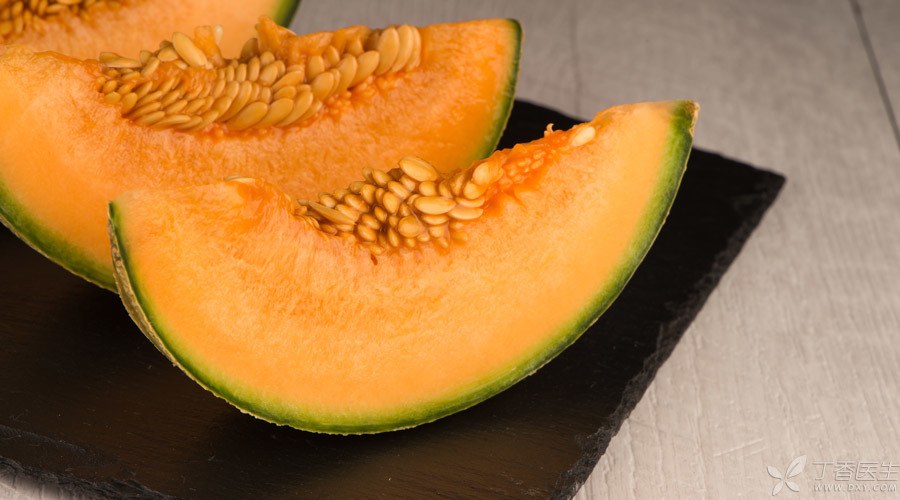Summer and autumn are harvest seasons. All kinds of fresh fruits are on the market one after another. Everyone wants to eat…
Among many fruits, [melon] is definitely a powerful one. In addition to heavyweight watermelon, there are also green treasure melon, white orchid melon, reticulate melon, cantaloupe, horn honeydew melon…
Who are they? Which is better?
Dr. Clove will tell the story of Guagua today.

All kinds of sweet melons, what is the relationship?
Actually… They are all a melon.
Chinese people have a long history of eating melons. In the Book of Songs, there is a record of eating melons in July and breaking pots in August. The melons in this area are not wax gourd watermelons, but melons.
No matter whether the skin is thin or thick, crisp or hard, no matter whether it is called Green Treasure Melon, Bailan Melon or Hami Melon… They are actually melons.
These melons and melons are all cucurbitaceae melon plants, and are related to cucurbitaceae fruits and vegetables such as watermelons, pumpkins, cucumbers, loofah and gourd.
Why is melon bitter?
Eating bitter melons is definitely a very common thing, especially the part next to the melon vine.
The culprit is a toxic substance called cucurbitacin. It doesn’t matter if you don’t eat too much, but if you eat too much, you may be poisoned!
To be on the safe side, don’t eat where it is bitter.
Bitter pulp, loofah, cucumber, etc. are also caused by cucurbitacin. This should be regarded as a genetic problem of the melon family, and care should also be taken.
In addition to bitter hair, be careful of allergy when eating melons.
The most common frontal allergic reaction is oral stabbing pain, which can lead to vomiting, rash, dysphagia, etc. in severe cases, and may even cause blood pressure to drop.
Generally speaking, people who are allergic to pollen have a very high probability of being allergic to melons.
If you have someone with pollen allergy, remember to remind him.

Melon is so sweet, will you gain weight after eating it?
Muskmelon, it is really worthy of the name.
Its sweetness is outstanding among many fruits, especially various thick-skinned melons such as Hami melon and Bailan melon.
Does such a sweet melon grow fat after eating it?
In fact, melon is sweet, but its sugar content is not high. The carbohydrate contained in 100g super sweet cantaloupe is only 7.9 g, lower than that of apples, grapes and peaches.
If you don’t beat melons into juice and drink tons of water, then don’t worry too much.
Can melon seeds be eaten?
Melon is delicious, while melon pulp is especially delicious. It is absolutely not too sweet to say that it is as sweet as honey.
But sadly, there are too many seeds hanging on these white melon pulp…
These melon seeds not only affect the taste, many people are also worried that the melon seeds they eat will hang in the intestinal tract and damage the digestive system.
Dr. Clove tells you: I think too much!
In the long process of evolution, melon seeds have long adapted to animal transmission. Thick shells and smooth epidermis can help them smoothly pass through our intestinal tract, and how to eat and how to discharge them.
See you tomorrow …
Melon Family Reveals Secrets
01. The first group originated in Western Asia and is characterized by thick skin.

Musk melon and Kasaba melon, which are liked by Europeans and Americans, are both varieties with thick skin and thick pulp, and the outer skin cannot be eaten.
To say that the star of thick-skinned muskmelon, Bailan melon deserves it.
This variety, known in Europe and America as Honeydew, is also a star on the local dining table.
Their smooth white skin and round figure, as well as light green pulp, are their characteristics. Fully ripe Bailan melon, with soft meat and sweet taste. It matches their names seamlessly.
02. The East Asian group is another extremely important group. This group of melons is characterized by thin skin and crisp meat, which can be eaten directly.

The familiar horn honey and emerald in the market are all representatives of this group.
Green Treasure Melon is the representative of thin-skinned melon. It is characterized by green fruits and a standard [cantaloupe] figure: one big and the other small.
Horn honey also belongs to this category. It looks like a horn. When it matures, it is white and green all over.
Although their appearance is not very amazing, they all have crisp and juicy taste, and the sweet taste is enough to conquer the tongues of many people.
03. The third group originates from Central Asia and is characterized by its large size.

This group includes large summer melons and winter melons, and the familiar cantaloupe is also one of them.
Authentic Hami melons are yellow-skinned and yellow-pulp. Their pulp is neither as crisp as croissant honey nor as soft as Bailan melon, but between the two.
Orange pulp can easily become the focus of attention on the dining table.
After all this talk, you still don’t distinguish? Just buy what you like to eat……
